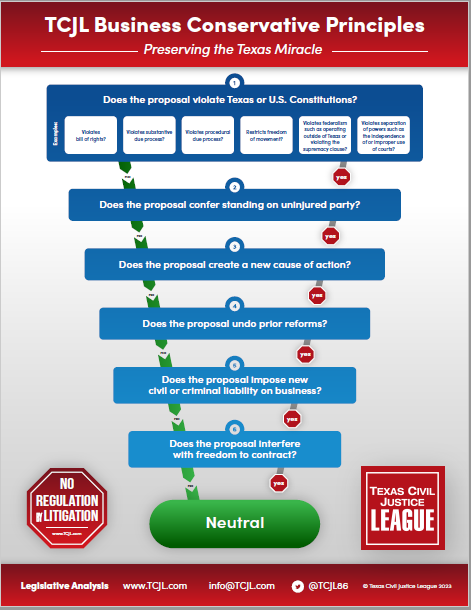 The Texas Supreme Court has held that the Texas Citizens Participation Act, as it existed prior to the 2019 legislative reforms, does not apply to a dispute between Drayton McLane, the former owner of the Houston Astros, and Jim Crane, who bought the team in 2011 for $615 million.
The Texas Supreme Court has held that the Texas Citizens Participation Act, as it existed prior to the 2019 legislative reforms, does not apply to a dispute between Drayton McLane, the former owner of the Houston Astros, and Jim Crane, who bought the team in 2011 for $615 million.
McLane Champions, LLC and R. Drayton McLane, Jr. v. Houston Baseball Partners LLC (No. 21-0641; delivered June 30, 2023) arose when, two years after purchasing the team, Crane discovered that the purchase price, which was established partly from a valuation of the Astros’ interest in a regional broadcast network launched by McLane’s Astros, the Houston Rockets, and Comcast in late 2012, may have been an order of magnitude larger than it should have been. Based on representations of McLane’s investment bank that Comcast had proposed the rates, thought them reasonable and achievable, and believed that it would be able to sign affiliate agreements with other providers at equivalent rates, Crane agreed to the deal. He subsequently assigned all rights under the agreement to a wholly owned subsidiary, HBP Team Holdings, LLC, and McLane. Crane, and HBP amended the purchase agreement to identify HBP as the purchaser (though the indemnity provisions still protected Crane).
In the event, the Comcast network failed in December 2012, only a few months after launch. The other affiliate providers Comcast could find would only agree to much lower rates, which triggered a “most favored nation” clause that concomitantly reduced the rate Comcast paid. The downward spiral in revenues doomed the network, as well as the media rights fees payable to the Astros. Comcast filed an involuntary bankruptcy petition against the network in September 2013. Crane waited another month before filing suit against McLane and Comcast for fraud, negligent misrepresentation, civil conspiracy, and breach of contract, asserting that the Astros and Comcast knew all along that the network’s business plan wouldn’t work and misled Crane into thinking it would. Comcast removed the case to federal bankruptcy court, but the bankruptcy court ordered it remanded to state court. Comcast’s appeal of that decision took five years to resolve, but ultimately a federal district court affirmed the bankruptcy court’s remand order. Once the case got back to Harris County, McLane and Comcast moved to dismiss under the TCPA and for lack of constitutional standing. The trial court denied the TCPA motion to dismiss, which the Houston [14th] Court of Appeals affirmed. McLane sought review.
In an opinion by Justice Lehrmann, joined by Justices Boyd, Devine, Busby, Bland, Huddle, and Young, SCOTX affirmed. It first rejected McLane’s argument that Crane lacked constitutional standing, thus depriving the trial court of subject matter jurisdiction. “To show constitutional standing,” Justice Lehrmann wrote, “a plaintiff must demonstrate that: (1) it suffered a concrete and particularized injury-in-fact; (2) the injury is fairly traceable to the defendant’s conduct; and (3) a favorable decision is likely to redress the injury” (citing In re Abbott, 601 S.W.3d 802, 808 (Tex. 2020)). Since Crane spent over $300 million of his own money, as well as borrowing another $315 million, the case, as Justice Lehrmann put it, presents “a textbook ‘pocket injury’” (citations omitted). Crane further alleged that the injury resulted from McLane’s misrepresentation and sought to recover money damages to redress its injury. Constitutional standing was thus established. Although McLane argued that Crane lacked “standing” because he assigned his interest to HBP, the Court ruled, that goes to Crane’s capacity to sue on the purchase agreement, not standing.
Turning to the threshold issue of whether the TCPA applies, the Court’s analysis centered on whether Crane’s legal action had anything to do with “a matter of public concern.” The pre-2019 TCPA defined this term more broadly than current law, and as Justice Lehrmann pointed out, “we have held that some—but certainly not all—private communications may be made in connection with a matter of public concern and thus subject to a TCPA motion to dismiss.” The Court reviewed three such opinions—Lippincott v. Whisenhunt 462 S.W.3d 507 (Tex. 2015) (TCPA applied to defamation claims based on a hospital employee’s emails discussing a nurse anesthetist’s allegedly substandard medical services, even though the statements were not publicly communicated); ExxonMobil Pipeline Co. v. Coleman 512 S.W.3d 895 (Tex. 2017) (TCPA applied to defamation claims brough against a former employer based on safety violations); and Creative Oil & Gas, LLC v. Lona Hills Ranch, LLC, 591 S.W.3d 127 (Tex. 2019) (TCPA does not apply in an oil and gas lease dispute in which communications involved “a limited business audience” and a “private contract dispute affecting only the fortunes of the private parties involved”). “Taken together,” Justice Lehrmann wrote, “these cases demonstrate that communications that are merely ‘related somehow to one of the broad categories’ set out in the statute but that otherwise have no relevance to a public audience are not ‘communications made in connection with a matter of public concern” (citations omitted).
Justice Lehrmann further clarified that “the communications themselves must relate to a matter of public concern” at the time they are made (“in connection with”), not at some later point at which the public might become interested in the controversy. The key test under the old TCPA, then, is whether “the communication in which the suit is based [has] some relevance to a public audience” and “the ‘connection’ between the communication and the matter of public concern must exist when the communication is made.” The Court’s construction “harmonizes the various statutory definitions within the TCPA’s express purpose: safeguarding constitutional rights while simultaneously protecting plaintiff’s rights to file meritorious lawsuits for demonstrable injuries.”
Applying the test to Crane’s lawsuit, the Court observed that “the fact that the statements were, broadly speaking, about a network that would carry Astros games, and the fact that the public has a general interest in the Astros, does not mean that the statements were made in connection with a matter of public concern under the TCPA” (citations omitted). Rather, “[t]he allegation is that the misrepresentations left [Crane] with the consequences of a broken network because they led [Crane] to purchase the team and its interest in that broken network.” Though undoubtedly the fans would have ended up suffering the consequences of the financial hit of the failed network, either because they couldn’t see the games on television or the failure doomed the team to semi-permanent mediocrity (the Astros weren’t so good in those years, as you recall), the lawsuit is really about Crane’s “complaint [] that the actual value of the asset [he] purchased was substantially less than [McLane] represented and that [he] was induced by those representations to pay an inflated purchase price.” In other words, at bottom this case concerns a “garden-variety fraud and breach-of-contract dispute between a private buyer and a private seller regarding statements made during a private negotiation that have nothing to do with ‘the constitutional rights of persons to petition, speak freely, associate freely, and otherwise participate in government to the maximum extent permitted by law.”
McLane argued further that pre-2019 definition of “exercise of the right of association” applied. Under that definition, the term is defined as “a communication between individuals who join together to collectively express, promote, pursue, or defend common interests.” As Justice Lehrmann pointed out, the 2019 amendments narrowed the definition to qualify “common interests” as those “relating to a governmental proceeding or a matter of government concern,” bringing the definition in line with that of the “exercise of the right of speech.” The question for the Court was whether the pre-2019 definition, read in the context of the statute, likewise require the relation to a matter of public concern. Noting that the courts of appeals have split on whether an alleged conspiracy can constitute a “common interest,” the Court opted to follow the Houston [1st] Court of Appeals’ interpretation in Gaskamp v. WSP USA, Inc., 596 S.W.3d 457, 475 (Tex. App.—Houston [1st Dist.] 2020, pet. dism’d), which defined “common interest” to “require that the object or purpose of the protected conduct relate to a governmental proceeding or a matter of public concern.” The Court concluded that “[c]onstruing ‘common interest’ to include a public component is [] congruent with the statute as a whole.” Consequently, the “mutual business interests” between McLane and Comcast do not rise to the level of a “common interest” protected by the TCPA.
Chief Justice Hecht, joined by Justice Blacklock, dissented. The CJ would have held that the “matter of public concern” element was satisfied because there was a “direct relation” between Crane’s claims and a general public onsisting of Astros fans, who faced the “impossible choice” between losing access to televised games and the continuation of a financially weak franchise with little hope of winning. Justice Blacklock concurred but added that he would like to see the whole lawsuit go away because since Crane bought the team, it has become one of the most successful franchises in the sport; Crane has not only benefited from buying the team, he has profited from it.
In any event, the decision, we think rightly, establishes a much more discernible boundary between private “garden variety” business deals and public matters that really do implicate constitutionally protected First Amendment rights. The Legislature would not have felt compelled to intervene in 2019 if it had not been seriously troubled by the virtually unlimited scope of the statute and the immense amount of satellite litigation it subsequently produced. Inasmuch as there still exist pre-2019 TCPA cases in the appellate pipeline, the decision provides welcome and valuable guidance and clarity in TCPA jurisprudence.












